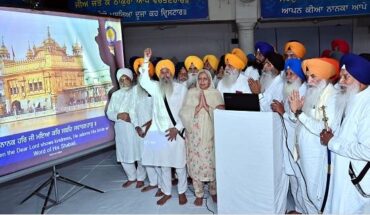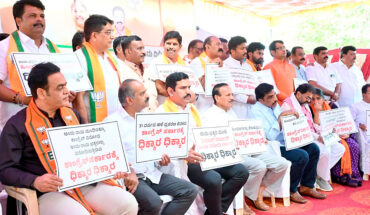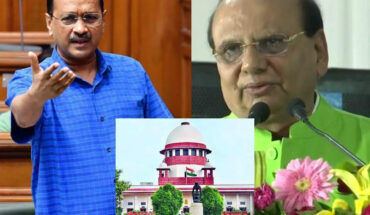By Dr. Harvinder Kaur
According to the data published by the Centre for Monitoring Indian Economy (CMIE), in the month of April, Haryana reported the highest rate of unemployment in the country in the second successive year. The unemployment rate was reported to be 34.5% for April 2022 and was 23% in the month of January. In April one of the major reasons is power cuts in Northern India. Because of weak economic activities, 38 lakh people joined the army of unemployed in India. Moreover, the eligible people left the search for employment as they know that there is no opportunity for employment in the market. About 4.25 lakh people in the private sector became unemployed in Haryana because of the Russia-Ukraine war and power cuts in the month of April.
Other states like Rajasthan, Delhi, and Goa have unemployment rates above 27%. Overall, India’s unemployment rate stands at 7.3%, with Urban unemployment of 9.30%. Nearly one-fourth of Haryana’s workforce employable over the age of 15 was jobless at the end of 2021. Educated people in the urban areas took a bigger hit, the CMIE found. Around 20 lakh people are in the state who are willing to work but are unemployed.
In urban areas, more than 23% of the workforce was without any employment compared to 21% in rural areas, and age-wise unemployment distribution shows, that fresh graduates and drop-outs in their early twenties are the job seekers. Analysis of unemployment also found a huge gap between the gender, while 18% of the male workforce was found jobless,66% of employable females were jobless.
In fact, the other way around unemployment rate is increasing in Haryana and it is among one of the wealthiest and most economically developed regions of India. Haryana is basically an agrarian state and constitutes 1.5% of India’s area, yet contributes 15% of its agricultural produce, which has grown 7 times since the foundation of Haryana in 1966. About 86% of the area in the state is arable, and of that 96% is cultivated. About 75% of the area is irrigated. Haryana’s agricultural GDP contribution to the nation’s agricultural GDP is 14.1%. Haryana is the ‘Basket of Food grain’ and bowl of rice, having a lion’s (63%) share in Basmati exports and contributing 7% of India’s agricultural exports, which places Haryana in 14th place on the list of Indian states and union territories by GDP behind only much bigger states that are significantly larger in both area and population.
Haryana is at 3rd position in nationwide ranking in terms of ease of doing business and the leader in North India with 7 operational SEZs and an additional 23 formally approved SEZs (20 already notified and 3 in-principal approval.
Haryana is one of the leading states in terms of industrial production also, especially passenger car two-wheelers, mobile cranes, and tractors. Haryana is a preferred destination for auto majors and auto-component manufacturers. The state is host to many large automotive players. The state produces two-thirds of passenger cars, 50% of tractors, 60% of motorcycles, and 50% of the refrigerators manufactured in the country. Automobiles and auto component exports from Haryana were about US$ 1.070.81 million in FY20 and have reached US$ 515.3 million in FY21.
Haryana along with states like Maharashtra and Tamil Nadu are considered hubs for manufacturing automobiles and related parts in India. Leading automakers like Maruti Suzuki India Ltd, Hero MotoCorp Ltd, Honda Motorcycle, and Scooter India Ltd have factories in places like Gurgaon and Manesar.
The northern cluster is around the National Capital Region and contributes 32% of total automobile production. Gurgaon and Manesar, in Haryana, are where the country’s largest car manufacturer, Maruti Suzuki, is based, still, about 34% of people in Haryana are unemployed in April 2022. Then what are the reasons for this contradiction? Unemployment is Perhaps the biggest problem Haryana facing today.
In Haryana job means, a job in govt. sector. In the last two years govt. services are nil in the state. Moreover the case of paper leakage and corruption in The functioning of government recruitment agencies like the Haryana Staff Selection Commission (HSSC) and Haryana Public Service Commission (HPSC) to provide jobs for cash scheme. only the powerful and wealthy and the politically strong people capture the jobs of govt. sector and this is going to worsen the conditions by increasing income inequalities in Haryana. There have been frequent paper leaks. Recently, the recruitment process of 9,361 posts, for which more than 27 lakh applicants have been waiting for the past two to eight years, was canceled. Several other selections have also been withheld or canceled and job seekers are becoming overage.
Unemployment is a multi-faceted problem. It exists due to the lack or absence of employment opportunities. Unemployment is Perhaps the biggest problem Haryana facing today. The major reason behind this problem is, as Haryana is basically an agrarian economy and more people are engaged in agriculture fields than required (disguised unemployment), as they don’t want to leave their comfort zone until and unless they got any govt job. it is the disguised unemployment, particularly in the agriculture sector that is even more deleterious. Moreover, agriculture in Haryana depends on nature and on traditional methods and there is a lack of processing units in rural areas so that the farm product can be used to make the final product by value addition and more disguised farmers and landless labor can be absorbed in the agriculture sector. The second major reason is that technical education institutes have mushroomed all over the state, but the quality of education is low. In the case of Haryana, the major factor is the lack of quality and skill education. Student of 8th class of a govt. school cannot read the content of the 4th class. We need more professional course institutes and technical education institutes to make our youth skilled and qualified workers. We were in need of an employment generation strategy to combat the high unemployment rate. Govt. have to plan a technical education strategy so that the supply of quality workers should be according to the demand of industries. Moreover, industries should be decentralized so that people get work near their hometowns.
Possibilities : Haryana aggressively promotes organic farming; financial assistance is provided to farmers for the production and use of vermicompost. Agriculture is one of the biggest employment generators in rural Haryana, with strong potential in value addition & exports. The state exported major agricultural products (basmati rice) worth US$ 2,290.71 million in FY20 and US$ 1,527.49 million in FY21. Special crops can be promoted as Basmati rice. India accounts for a lion’s share of Basmati rice exports and credit goes to Haryana. More than 85% of the global Basmati exports (by quantity and by value) are from India. Haryana contributes 7% of India’s agricultural exports and 60% of India’s Basmati rice export. In India, the Basmati exports are about 37% of the total rice exports by quantity and 60% by value in 2018-19. India, the world’s biggest rice exporter, mainly exports non-basmati rice to African countries and premier basmati rice to the Middle East.
Districts such as Panipat, Gurugram, Faridabad, Hisar, and Sonepat have developed into robust textiles centers in Haryana. Readymade cotton garments are one of the major exports from Haryana. Exports reached US$ 834.87 million in FY20 and US$ 385.08 million in FY21. Govt. should focus on this textile industry to generate employment.
Haryana Tourism has taken the initiative to introduce the concept of Farm Tourism in India. This is the first of its kind in India. The Haryana government has recently started a ‘Home Stay’ scheme to boost the tourism sector in the state. In it, registered farm owners can host tourists as part of holiday packages. This scheme has been started to attract people to villages. Holiday packages will be offered to tourists at registered farms. The state government is also focusing on developing ancient cultural heritage, and historical and famous pilgrimage sites as tourist spots to aware people of the history and culture of Haryana. It has also given the industry status to the tourism sector, so employment can be created in this sector also.
The local candidate bill can be counterproductive for Haryana. It can prove double-edged for Haryana’s economy. On one side it can increase employment but industries from Haryana can shift to other states and will negatively affect the ranking of ease of doing business in Haryana.





